Visiting Vancouver’s Secret Brewery
Posted by Jer Thorp on Sunday, April 4th, 2010Tags for this Article: beer, brewing, brewpunk, DIY, East Van, local
I’d like to be able to start off this article with a shadowy meeting; with a blindfolded car ride or with a secret entrance of some kind. The truth, though, is that this story ended up being about as local as local gets – it starts with a three block walk, across Hastings street to a backyard in one of the city’s oldest neighbourhoods.
Noel, Peter, and Chris (not their real names) have been brewing together for two years. This backyard space is their second makeshift brewery; the first was in an industrial area a dozen or so blocks to the east. When I arrived, they were just getting started on what was to be a long day of brewing, the result of which would be 4 kegs worth of beer. The yard was scattered with brewing equipment of various kinds, mostly homemade and definitely built on a budget.
Let me pause here to stop a thought that might be floating to the top of some of your glasses: this is not an article about hobby brewing. These guys are serious about their beer. A look at some of the varieties they’ve brewed over the last year should calm any concerns: a Simcoe-hopped IPA, a belgian style saison, and a rauchbier are highlights of a long and very impressive list. Their beers have been poured at cask festivals and private tastings alongside BC’s best. I joined them on Sunday for their 161st brew; the recipes for the day included a perle-hopped blonde and a northern brewer pale ale.
Brewing isn’t rocket science. But it is, in equal parts, microbiology, chemistry and engineering. During lulls in the brewing process the guys kept themselves busy taking detailed notes, discussing possible improvements to equipment, and critiquing current and past recipes. It has been more than 15 years since I’ve done any brewing of my own, so was nice to spend a day being reminded of what goes into the beer behind the bar. For this brew day, the process involved mashing, lautering, sparging, and boiling.
The first step, then, is to make a mash. This happens in a container called a ‘mash tun’ and involves combining malt (partially germinated, dried & cracked barley) with hot water. This stage of the process is quite temperature sensitive and can have a huge effect on the success of the brew. Peter explained that by carefully controlling the heat during this stage, the brewer can dictate the character of the resulting beer. Higher temperatures encourage the action of the alpha-amylase enzyme which breaks down simple sugars, while lower temperatures stimulate beta-amylase to deconstruct more complex sugars. A low-temperature mash will leave more complex sugars (good for sweeter darker beers) while a high-temperature mash will leave mostly simple sugars which are easily converted to alcohol (good for lighter, drier beers). Throughout the mashing process, the brewers kept a close eye on the thermometer, recording the values to help improve their process and results for the next time through.
After giving the enzymes in the mash some time to work their magic, the hot slurry of sugars and water is drained out of the filtered-bottom of the mash tun into a large metal kettle (this process is called lautering). Additional hot water is poured through the remaining grain to rinse out any valuable sugars (this rinsing step is called sparging. It helps, by the way, to imagine these terms being spoken by a bearded english farmer). This liquid mix of water and sugar is called wort, and is the real ‘base of beer’. At this point, the wort is sweet and has a delicious ovaltine aroma. Of course, you want a beer and not a malty children’s drink, so this is where the star of the show – hops – make their appearance.
The wort is boiled for about an hour. This boil terminates the enzymatic processes that we described above, and also gives the brewers a chance to add some flavour, through hops, or sometimes herbs, fruit rinds and other non-standard ingredients. Hops fall roughly into two categories: bittering hops, which build the foundation of the beer’s bitter flavour, and aroma hops, whose complex essential oils give beers brightness and complexity. Bittering hops are typically added near the beginning of the boil whereas aroma hops are added near the end (if these hops are boiled for two long, their essential oils are denatured and lose their characteristic flavours).
After the boil, the wort is filtered into a sterilized fermentation vessel. Here, yeast is added, and the microbial magic occurs – turning sugars into alcohol and in the process finalizing the flavour profile of the brew. Finally, the beer is racked into kegs and carbonated. And, ready to drink.
We’ve made our way to the backyard brewery and through a brief primer on making beer. Now we find ourselves in the legal tangle that surrounds the question I know a lot of Vancouver beer fans are asking right now: where can you try the beer?
This city is full of underground foodists – people are curing their own salami, aging their own cheese, distilling their own whiskey, running underground restaurants, and as we’ve just seen, kegging their own world-class beer. They do these things out of a love for food and drink, and out of a drive to do things differently. Unfortunately, we live under a set of (mostly) well-intentioned food control laws that prevent this kind of activity from easily becoming a means of making a living.
The business of beer-making, in particular, is as much an exercise in navigating bylaws and tax systems as it is in brewing beer. To start a profit-scale brewery from scratch would require a large amount of dollars and a great deal of patience for bureaucracy. This explains why the brewing business is often an old person’s game – microbreweries are most typically started by people who have already been successful in fields and who have some money to burn.
For now, Chris and Peter and Noel are staying under the radar, which suits them just fine. They’re perfecting their craft, saving money, building up equipment – and brewing beer. Their brewpunk business plan isn’t an easy one, but it allows them to experiment freely – their recipes are changing (and improving) with every barrel they brew. Their long term plan is to open a brew pub in the East Side, bringing their experience in brewing together with a shared passion for food and hospitality. In the meantime, if you keep your ear to the ground, and talk to the right people, you may well get a chance to enjoy a beer from Vancouver’s best (and only?) underground brewery.

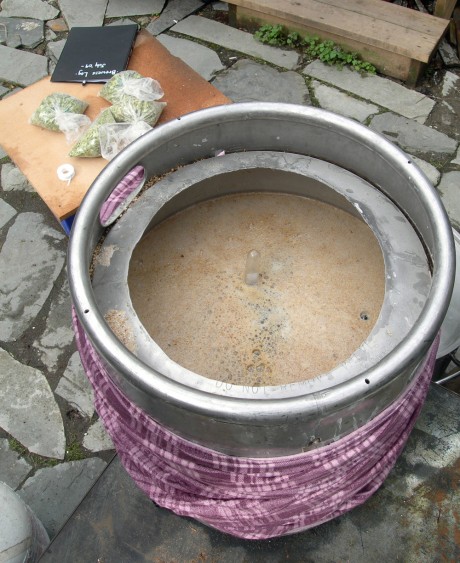
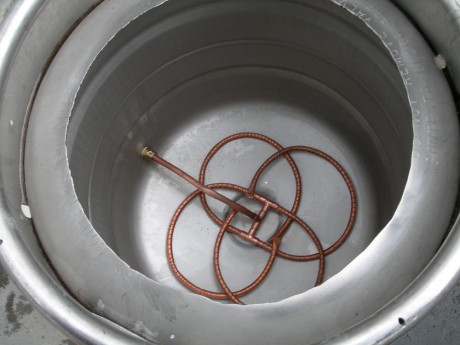
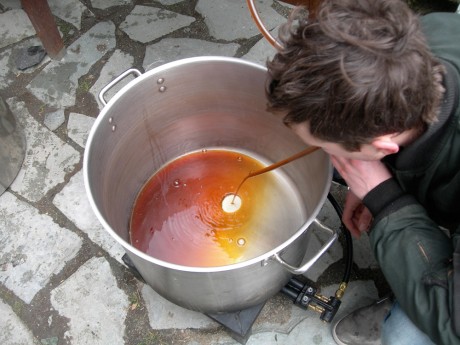
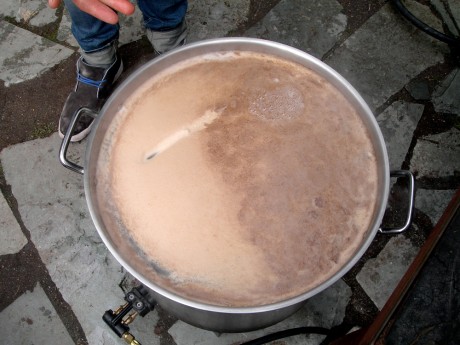
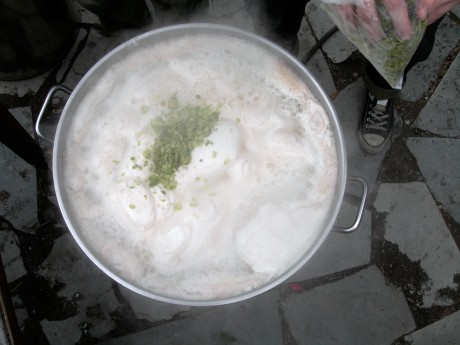

Posted on April 4th, 2010
Degan Beley says:
oooh, sounds awesome. I’d love to try it.
Posted on April 21st, 2010
Alibi Nige says:
great article jer.
though, i think i recognise those chucks and the back of that head…
Posted on October 19th, 2011
blakester says:
The passion of brewing beer is as rampant as grow ops are all over Beautiful British Columbia. It remains an underground pursuit of simple pleasures.
From the Campbell River Brew Crew
Posted on March 11th, 2013
Jadwiga Tiffany says:
Good day it was a pleasure visting your site.